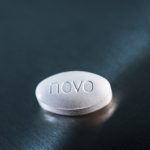
(HealthDay News) – Danish drugmaker Novo Nordisk said Thursday it will limit distribution of its low-dose versions of the wildly popular weight-loss drug Wegovy, to ensure that people already taking the drug will have enough supply. The medication is one of three drugs from a class known as GLP-1 agonists. These medications have been shown in studies to be effective for weight loss but have faced shortages amid a boom in sales triggered by celebrity endorsements, the company said in a statement. The two other drugs in this class, Eli Lilly’s Mounjaro and Novo Nordisk’s Ozempic, are also used to treat type 2 diabetes. Wegovy is the same medication as Ozempic but it is available in higher doses. “Today, we are serving hundreds of thousands of U.S. patients with Wegovy,” the company said. “However, trends indicate that demand for Wegovy in the U.S. will exceed our current supply capacity.” While working to expand supply, the drugmaker is sending “limited quantities” of 0.25 milligrams (mg), 0.5 mg and 1 mg dose strengths to wholesalers. Those drugs will eventually be distributed to retail pharmacies. “We anticipate that many patients will have difficulty filling Wegovy prescriptions at these doses through September,” the company noted. However, “we do not currently anticipate supply interruptions of the 1.7 mg and 2.4 mg dose strengths of Wegovy.” Obesity and severe obesity have… read on > read on >


















